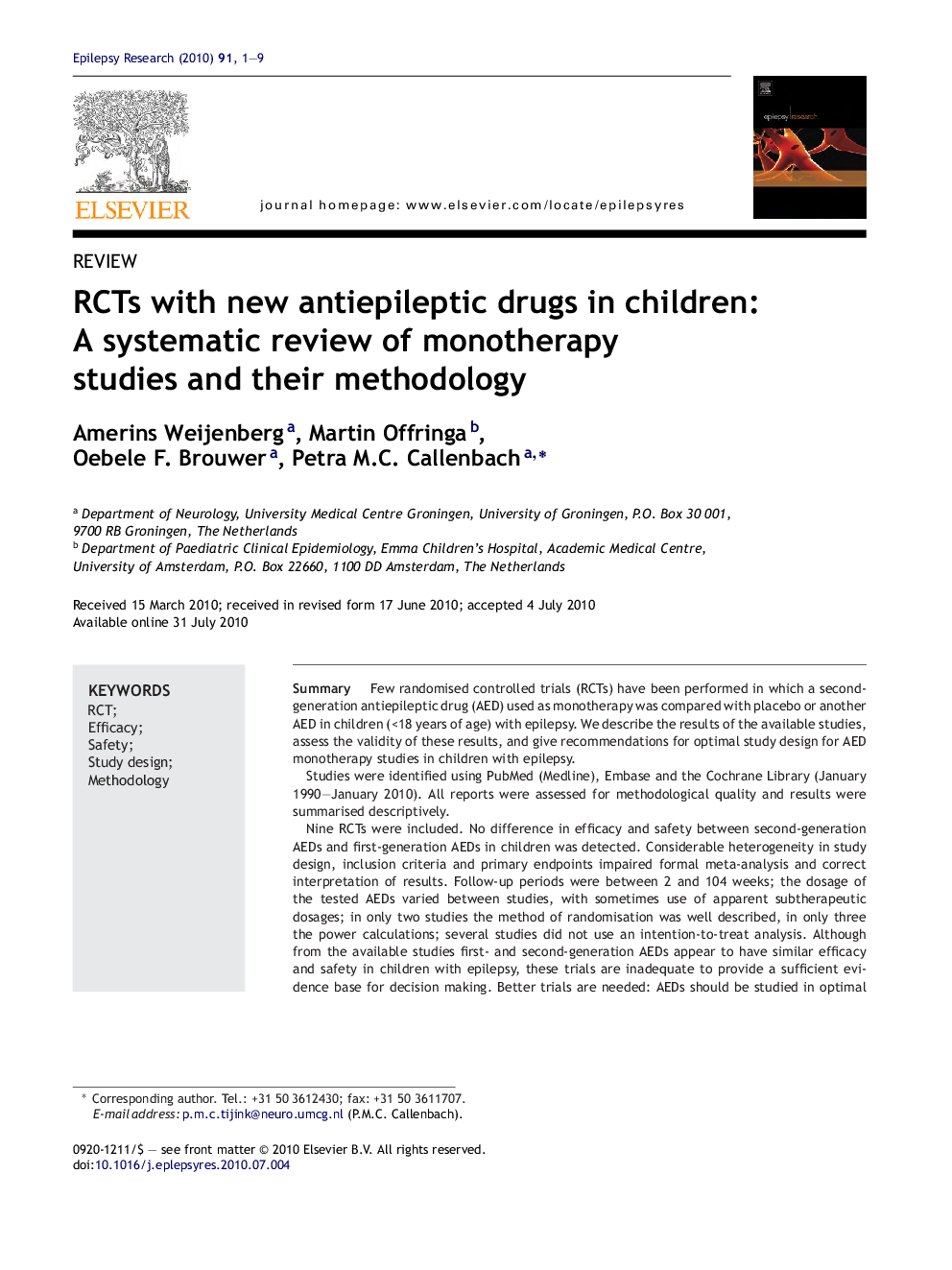| کد مقاله | کد نشریه | سال انتشار | مقاله انگلیسی | نسخه تمام متن |
|---|---|---|---|---|
| 3052474 | 1186109 | 2010 | 9 صفحه PDF | دانلود رایگان |

SummaryFew randomised controlled trials (RCTs) have been performed in which a second-generation antiepileptic drug (AED) used as monotherapy was compared with placebo or another AED in children (<18 years of age) with epilepsy. We describe the results of the available studies, assess the validity of these results, and give recommendations for optimal study design for AED monotherapy studies in children with epilepsy.Studies were identified using PubMed (Medline), Embase and the Cochrane Library (January 1990–January 2010). All reports were assessed for methodological quality and results were summarised descriptively.Nine RCTs were included. No difference in efficacy and safety between second-generation AEDs and first-generation AEDs in children was detected. Considerable heterogeneity in study design, inclusion criteria and primary endpoints impaired formal meta-analysis and correct interpretation of results. Follow-up periods were between 2 and 104 weeks; the dosage of the tested AEDs varied between studies, with sometimes use of apparent subtherapeutic dosages; in only two studies the method of randomisation was well described, in only three the power calculations; several studies did not use an intention-to-treat analysis. Although from the available studies first- and second-generation AEDs appear to have similar efficacy and safety in children with epilepsy, these trials are inadequate to provide a sufficient evidence base for decision making. Better trials are needed: AEDs should be studied in optimal paediatric doses, power should be sufficient to detect small but clinically relevant differences, and the follow-up period should be long enough. Most important, primary endpoint to be evaluated should be time to treatment failure or retention rate, since these outcomes combine efficacy and safety.
Journal: Epilepsy Research - Volume 91, Issue 1, September 2010, Pages 1–9